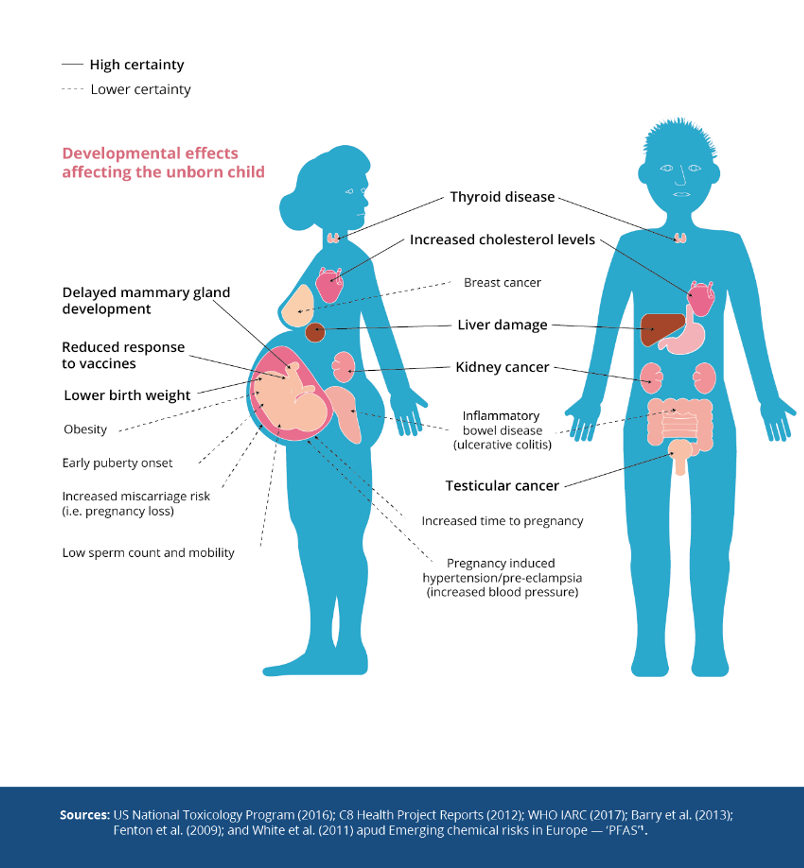Health Impacts
Health Impacts of PFAS
Per- and polyfluoroalkyl substances (PFAS) are a large group of human-made chemicals found in many consumer products to make commonly used items resistant to water, grease, fire and heat. Common uses of PFAS include carpeting, waterproof clothing, food wrappers and personal care products. The most common way PFAS can enter your body is by swallowing them. This can happen when you drink water or eat food with PFAS in them, such as eating fish from PFAS- contaminated waterbodies or from plants grown in PFAS contaminated soil, or animal products from animals inadvertently fed contaminated feed.
People can also inhale PFAS. People who work in industries that make or process PFAS are more at risk of breathing them in. However, using water containing PFAS for bathing, showering, cleaning the house and washing dishes or clothes should not represent a health concern because the amount of PFAS that can enter the body through the skin is very low.
Research is on-going to understand the health impacts of PFAS. Being exposed to PFAS does not mean you will have an immediate health problem. Usually, health effects show up after long term exposure. PFAS is considered a systemic toxicant as it effects multiple physiological systems. Some epidemiological studies suggest that PFAS exposure is linked to the following health effects:
- Increasing the chance of cancer, especially kidney and testicular cancers
- Lowering a woman’s chance of getting pregnant
- Increasing the chance of high blood pressure in pregnant women
- Increasing the chance of thyroid disease
- Increasing cholesterol levels
- Changing the body’s immune response

Talk to your doctor about any health concerns. It is always good to have regular check-ups for possible health problems.
Although some PFAS have been phased out, they are still present in the environment because they do not break down easily and there are still thousands more of these chemicals being used globally. Everyone has been exposed to PFAS. PFAS are found all over, and small amounts of these chemicals enter most peoples’ bodies each day. If you are concerned and choose to have your blood tested, results will tell you the concentrations of various PFAS compounds are in your blood. Currently, we do not know what PFAS levels will trigger a health effect but research is ongoing. Most people will have measurable amounts of PFAS in their blood. As a result, interpretation of measured PFAS concentrations in individuals is limited in its use but you can compare against the data published on the general population.
Michigan is currently conducting a large, long-term study designed to examine the health of Michiganders with past exposure to PFAS in their drinking water. The Michigan PFAS Exposure and Health Study (MiPEHS) is one of the most comprehensive and cutting-edge investigations into the health effects of PFAS exposure being conducted in the country. For more information about the study, click here.
For more information on human health from the EPA, visit the EPA website.



 Print
Print Email
Email